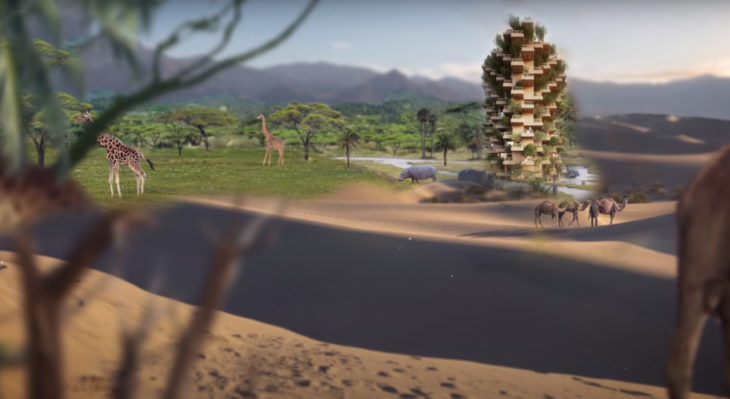
The object of this paper is to explore reforestation strategies in arid or semi-arid landscapes and more specifically in the Sahara desert. According to recent scientific research, Paleo-climatologists mention that the climate of the Sahara must have been completely different between 15,000 and 5,000 years ago. Geologists call this span of time, the “African Humid Period”, also known as the Green Sahara.
How to green the world’s deserts and boost an alternative form of wood urbanisation metabolics?
Towards this direction, the paper explores four cases of large-scale reforestation techniques in order to propose ways to implement the re-habitation of the desert to reverse climate change. The forthcoming results of this research are to evaluate the advantages and disadvantages of reforestation strategies, to turn the negative aspects to opportunities, such as deal water scarcity issues with wastewater treatment sewage irrigation, converting monocultures of fast-growing trees to natural forests rich in biodiversity, replacing the lack of governmental initiatives with new forms of carbon sequestration policies to harvest the forest, produce wood and create local wood-based industries, produce biofuels, protect the land against desertification and erosion, solve the problem of food security, stabilize sand dunes, protect the coasts and boost an alternative form of wood urbanisation metabolics.
#Deforestration #Reforestration #Ecological #Territorial #Wood Urbanisation # Metabolism
—
Inhabiting the Extreme is a project of IaaC, Institute for Advanced Architecture of Catalonia developed at Master in Mass Timber Design in 2021/2022 by Student: Alexandros Kitriniaris. Faculty: Daniel Ibanez. Course: Narrative 1